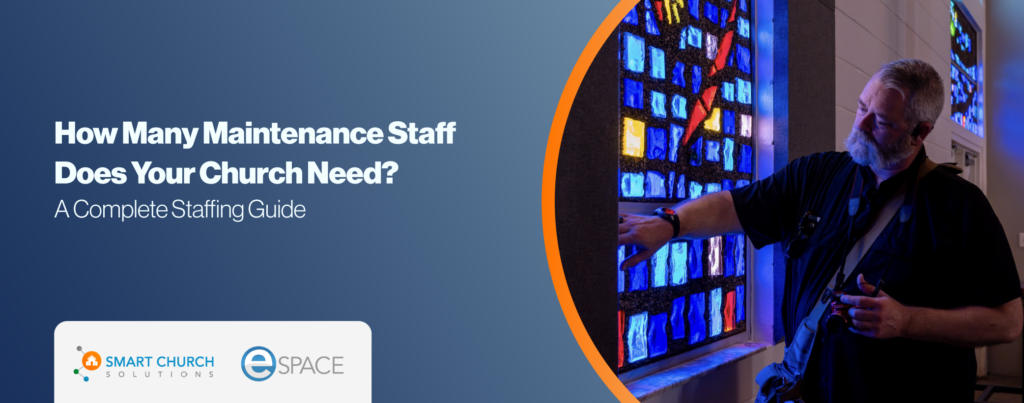Churches are largely supported financially by the members that belong to their communities, and the money members can give — whether it’s putting it in a collection basket at service or having a monthly amount deducted from their checking account — is contingent on a lot of factors. That said, what a church can raise on an annual basis is likely to change year-in and year-out. Knowing this, any church — regardless of the faith that is practiced — should make every necessary effort to save money where it can. A lot of these savings can be achieved by reducing church maintenance costs.
The good news is that there are a lot of ways any church can go about cutting costs — and many of these are practical measures that you can start implementing today. Even in prosperous times, sensibly shaving costs can only help bolster any reserve account to help out a church in periods where times perhaps aren’t as good. Here’s a look at five easy, practical things you can start doing today:
Invest in Facility Stewardship
Facility Stewardship is the concept of carefully assessing the operation, maintenance and management of any type of facility. In this case, we’re talking about your church building and any adjacent social halls, schools or other parts of the church. Essentially, a good stewardship plan involves regularly taking a “checkup” of a church’s facilities and making sure that the building (or buildings) is maximizing its efficiency and minimizing operational expenses — which is a significant overhead cost when it comes to a church. That said, here’s what you should be taking a look at and making adjustments as necessary:
- Review facility expenses relative to budgets.
- Review agreements with any existing vendors. Discuss their effectiveness and necessity, and consider soliciting bids to see if there’s are cost savings with another provider.
- Evaluate the overall condition of the facilities and determine any maintenance and renovation plans.
- Staff: While this may be one of the more difficult facility-related decisions that you may have to make, it’s always worth revisiting paid church staff members and whether or not any positions should move from full-time to part-time, or be eliminated altogether. Conversely, if your church grows, you may also need to add staff members and budget accordingly for that.
By knowing what you have and knowing what’s coming, you can more accurately adjust budgets and make changes to see where cost savings can be achieved.
Preventative Management and Maintenance
There’s a reason why you should be scheduling a medical physical at least once a year and why you should be having your car inspected when you take it in for its oil changes: Preventative maintenance saves money and can help you avoid more significant issues compared to if they were to go undetected and eventually result in emergency situations. This all falls into the facility stewardship tip that we discussed above when it comes to developing a maintenance plan. Make sure to include things like the HVAC system, kitchen appliances and equipment, computers and electronics, audio/visual equipment and the other necessities you need to hold service and functions at the church. Something as seemingly simple as scheduling HVAC tune-ups or inspections twice a year can help catch small issues before they become major ones, help decrease church maintenance costs, and help keep the system running effectively and efficiently.
Conserving Energy
You’re likely familiar with smart thermostats, which work to detect when household occupants are home or away from the home and adjust the temperature accordingly for more efficient heating and cooling. You can apply the same type of strategy to your church too, albeit you’ll need a more comprehensive system to help manage utility loads. Today, cloud-based models can be seamlessly integrated into your church and help take control of a lot more than just the heating and cooling practices. Yes, today, the right facility management programs can help control lights and blinds so you can ensure you’re maximizing natural daylight in settings. They can offer door access controls, so you can make sure certain areas of the church and common building are off-limits. And they can also help enhance facility safety with the inclusion of things like early detection sensors and smoke detectors. When implemented and used correctly, it’s not uncommon for churches to see a utility savings of 25 to 30 percent.
Take Advantage of Online Tools
Though the cloud-based tool we mentioned above does come with an upfront cost — and one that more than pays for itself if used correctly — there are a bevy of free online tools that can be utilized to help set budgets, plan maintenance and replacement schedules, and more. Here’s a look at some of the programs you can find any information you can attain from just browsing the Internet:
- Facility evaluator tools
- Specific church facility management solutions
- Other resources that can aid in budgeting, maintenance schedules, and replacement timelines
We’ll remind you that many of these online tools are free to use, so you’ve got nothing to lose in giving them a shot. At best, they can help you with budgeting and planning (more on this in the next section) and at the very worst the only thing you’re out is the time you invested in exploring them.
Budget Accordingly
Finally, we’d be remiss if we didn’t include something about making sure you’re always revisiting your budget to make sure your expenditures line up with your expectations. We suggest doing this at least once a year. If you follow the steps that we’ve outlined above and start to experience savings, then your budgets will — in all likelihood — decrease because you’ll be spending less on overhead and other areas. Take this money that you’re saving and put it back into the church. Here’s a look at what you should be budgeting for:
- Operational expenses
- Deferred maintenance expenses
- Capital reserve
- Capital projects
- Projected growth
- Inflation
Plan Affectively to Reduce Church Maintenance Costs
Don’t wait until times get tough to cut your costs. Taking the time to assess your church facilities, develop the appropriate plans and update your budgets can only go to benefit your church maintenance costs over the long-term. We suggest establishing a committee to get started on this task today if you haven’t already done so. It’ll just lead to a more financially sustainable congregation in the end. Contact us today for more information and inspiration on ways you can get started.






